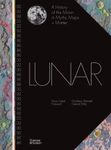![Pattern-Based Compression of Multi-Band Image Data for Landscape Analysis Pattern-Based Compression of Multi-Band Image Data for Landscape Analysis]()
Click to have a closer look
About this book
Contents
Customer reviews
Biography
Related titles
About this book
This book describes an integrated approach to using remotely sensed data in conjunction with geographic information systems for landscape analysis. Remotely sensed data are compressed into an analytical image-map that is compatible with the most popular geographic information systems as well as freeware viewers. The approach is most effective for landscapes that exhibit a pronounced mosaic pattern of land cover. The image maps are much more compact than the original remotely sensed data, which enhances utility on the internet. As value-added products, distribution of image-maps is not affected by copyrights on original multi-band image data.
Contents
Innovative Imaging, Parsing Patterns and Motivating Models.- Pattern Progressions and Segmentation Sequences for IMAGE Intensity Modeling and Grouped Enhancement.- Content Classification and Thematic Transforms.- Comparative Change and Pattern Perturbation.- Conjunctive Context.- Advanced Aspects and Anticipated Applications.- Appendix A. Public Packages for Portraying Polypatterns.- Appendix B. a-Scenario with PSIMAPP Software.- Appendix C. Details of Directives for PSI MAPP Modules.- Glossary.- Index.
Customer Reviews
Biography
Dr. Wayne L. Myers earned M.F. and Ph.D. degrees in forest ecology and forest entomology at the University of Michigan. He began his professional career in Canada as a research forest entomologist and biometrician. He then joined the faculty of forestry at Michigan State University specializing in biometrics and remote sensing. The position at Michigan State also encompassed consultancies with the U.S. Forest Service and a work in Brazil. He moved to Penn State University in 1978 in the School of Forest Resources. He is professor of forest biometrics and Director of the Office for Remote Sensing and Spatial Information Resources (ORSSIR) in the Penn State Institutes of Environment. He has thirty-five years of experience in research on development of remote sensing, geographic information systems, and related spatial technologies with applications focusing on natural resources and environment. This extends back to participation as a co-investigator in early investigations of ERTS/LANDSAT as the first spaceborne civilian multispectral sensor. His recent research has focused on dual level progressive segmentation of multispectral images for purposes of compression, integration with geographic information systems and pattern-based change detection. He has developed concepts and computation of echelons of spatial structure in digital surfaces that facilitate extracting major change features from change indicator images. Echelons offer alternatives to thresholding in surface or pseudo-surface rasters. Dome domains provide a further generalization of topological structure in signal surfaces. He has extensive international experience including long-term advisory for the U.S. Agency for International Development in India and research fellowships in Malaysia. He has placed special emphasis on interdisciplinary research and team approach. G.P. Patil: is Distinguished Professor of Mathematical and Environmental Statistics in the Department of Statistics at the Pennsylvania State University, and is a former Visiting Professor of Biostatistics at Harvard University in the Harvard School of Public Health. He has a Ph.D. in Mathematics, D.Sc. in Statistics, one Honorary Degree in Biological Sciences, and another in Letters. GP is a Fellow of American Statistical Association, Fellow of American Association of Advancement of Science, Fellow of Institute of Mathematical Statistics, Elected Member of the International Statistical Institute, Founder Fellow of the National Institute of Ecology and the Society for Medical Statistics in India. GP has been a founder of Statistical Ecology Section of International Association for Ecology and Ecological Society of America, a founder of Statistics and Environment Section of American Statistical Association, and a founder of the International Society for Risk Analysis. He is founding editor-in-chief of the international journal, Environmental and Ecological Statistics and founding director of the Penn State Center for Statistical Ecology and Environmental Statistics. He has published thirty volumes and three hundred research papers. GP has received several distinguished awards which include: Distinguished Statistical Ecologist Award of the International Association for Ecology, Distinguished Achievement Medal for Statistics and the Environment of the American Statistical Association, Distinguished Twentieth Century Service Award for Statistical Ecology and Environmental Statistics of the Ninth Lukacs Symposium, Best Paper Award of the American Fisheries Society, and lately, the Best Paper Award of the American Water Resources Association, among others. Currently, GP is principal investigator of a multi-year NSF grant for surveillance geoinformatics for hotspot detection and prioritization across geographic regions and networks for digital government in the 21st Century.



































